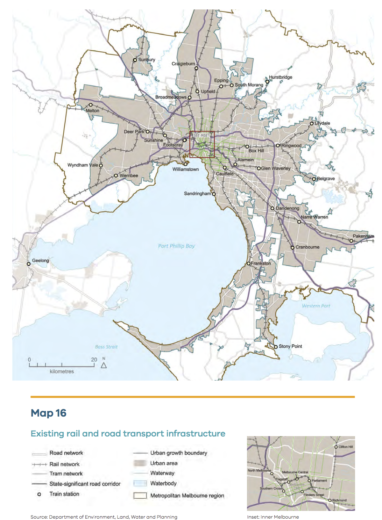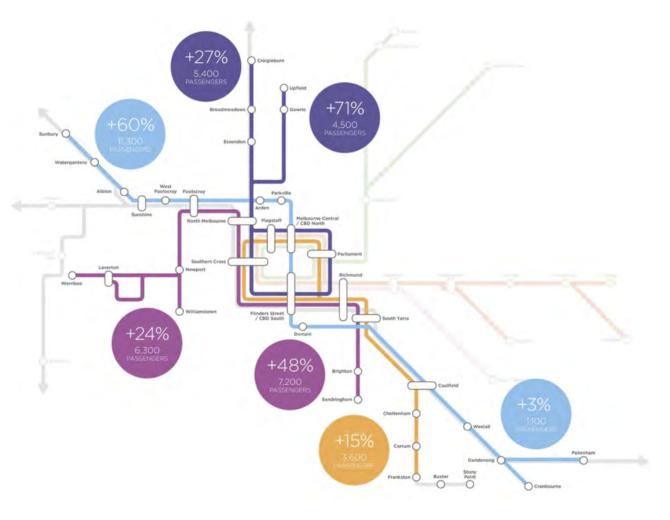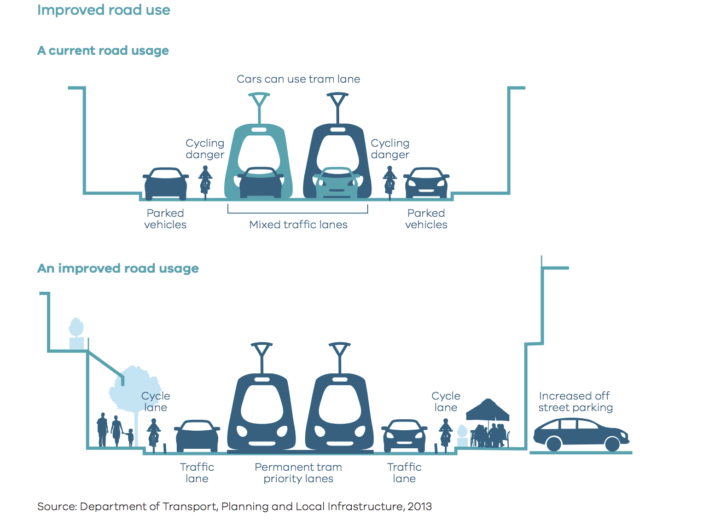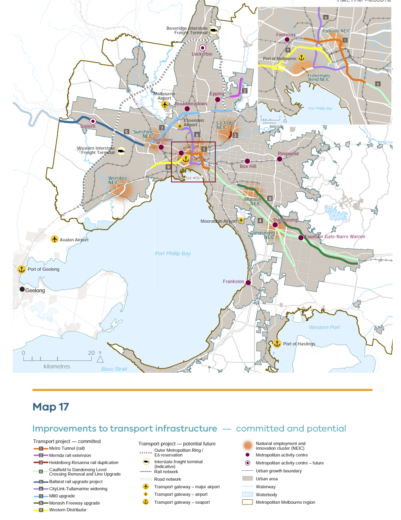Melbourne’s transport system needs the capacity to cope with an additional 10.4 million trips26 a day by 2050—up from the current figure of 12.5 million trips a day. To achieve that, Melbourne needs a huge, well planned investment that enables the city to grow whilst meeting the transport challenges. Through the review of Infrastructure Victoria’s 30-year strategy, plans for development of the transport network are being assessed and prioritised to overcome historic backlogs and provide for future needs as land use changes. For Melbourne to continue to be a globally connected and competitive city with strong and healthy communities and higher social and economic participation, the share of trips by public transport, as well as active transport modes such as walking and cycling, must increase. Melbourne needs one reliable, connected transport network where services are regular and easy to use, timetables are integrated, and major interchanges work better. That means land use and transport needs to support and encourage convenient trip options so that more people can meet most of their needs locally and be less reliant on private vehicles.

Policy 3.1.1 Create a metro-style rail system with ‘turn up and go’ frequency and reliability Melbourne’s rail network must grow so it can continue to support the productivity of Melbourne and service the needs of a growing population. The Metro Tunnel, to be completed by 2026, is a critical step towards evolving the train network into a metro-style system. A metro-style rail system will have a strong focus on passengers, delivering: • simpler timetables with a ‘turn up and go’ frequency and consistent stopping patterns • frequent services that facilitate easy interchange with other train lines as well as trams and buses • separate train fleets, maintenance and stabling facilities for each line • stand-alone, end-to-end lines that prevent service disruptions on one line from affecting other lines • modern signalling technology to maximise the number of trains that can operate on each line • high-capacity metro trains designed to minimise boarding and alighting times • separated road and rail crossings.

Provide high-quality public transport access to job-rich areas The efficiency, simplicity of the network and the quality of connections between public transport modes can make a major difference to people’s willingness to use public transport and expand the range of jobs and services they access. In many parts of the city, buses provide a high-quality transport service and are likely to play a greater role in the future. The best performing services are typically those where buses connect as part of an integrated public transport network. Where improvements to bus networks have already been delivered, there have been substantial increases in patronage. This approach will continue as the city develops and demand grows.


